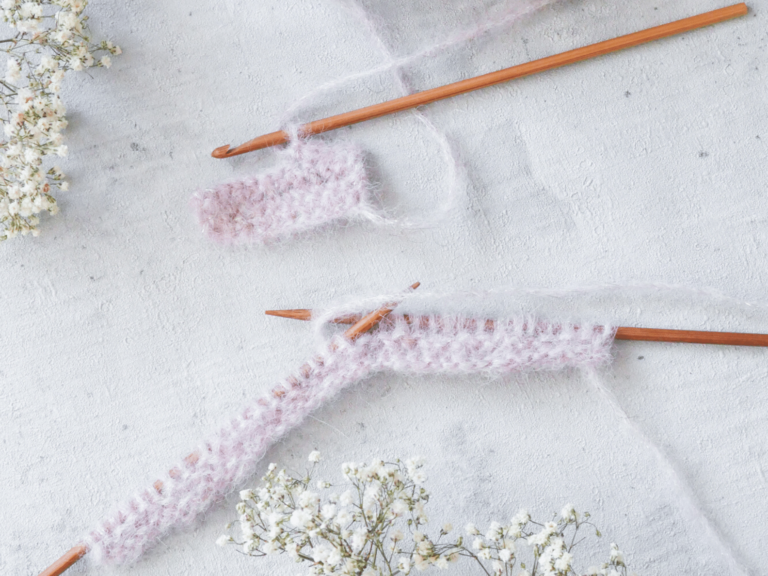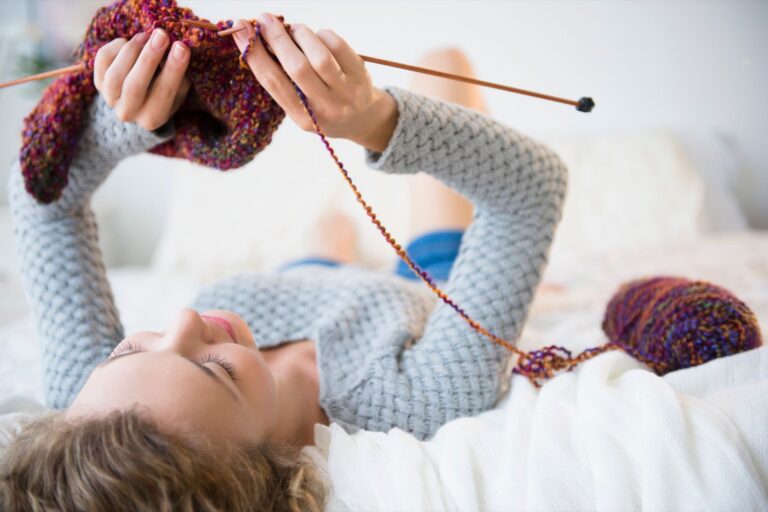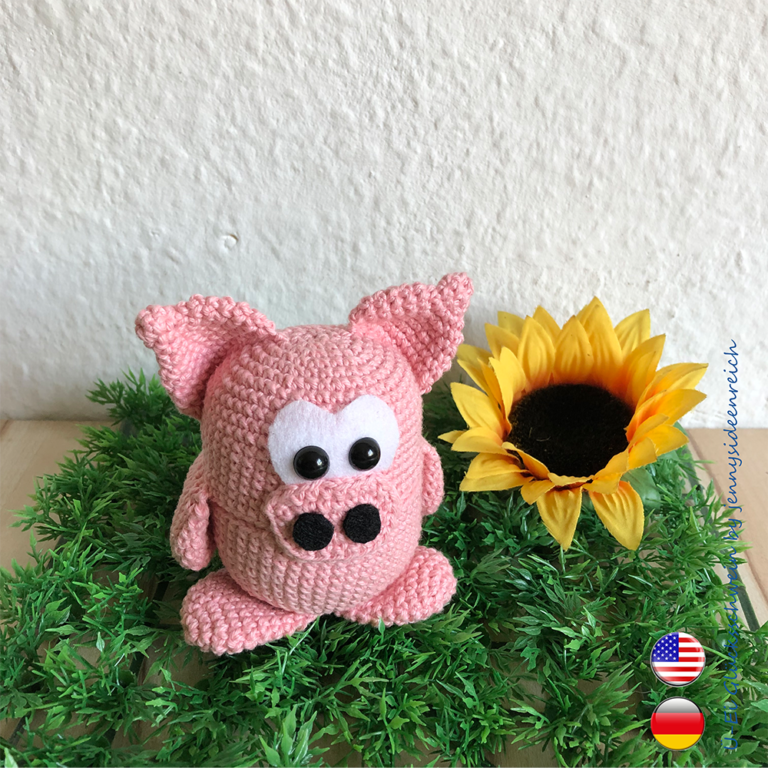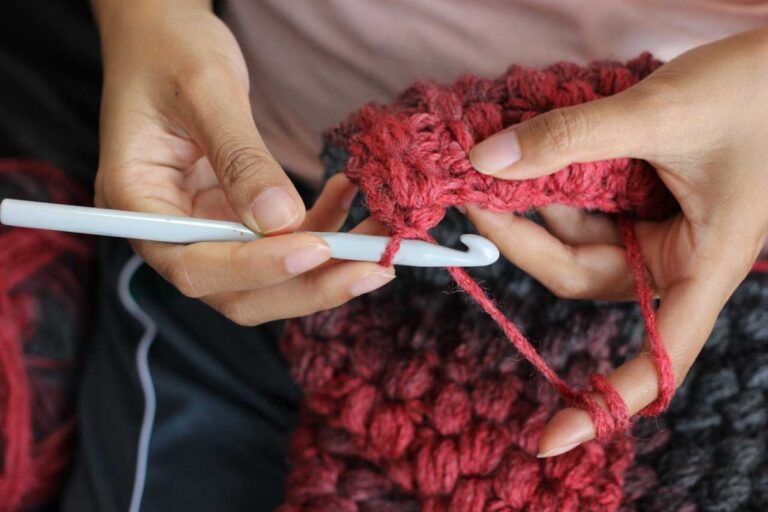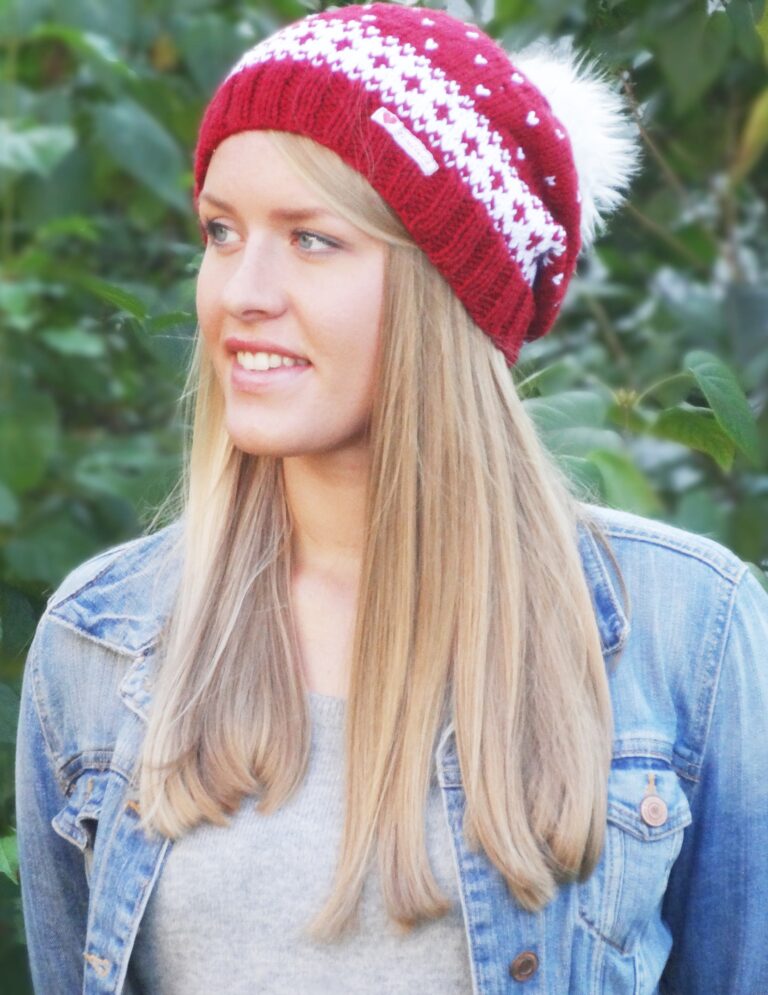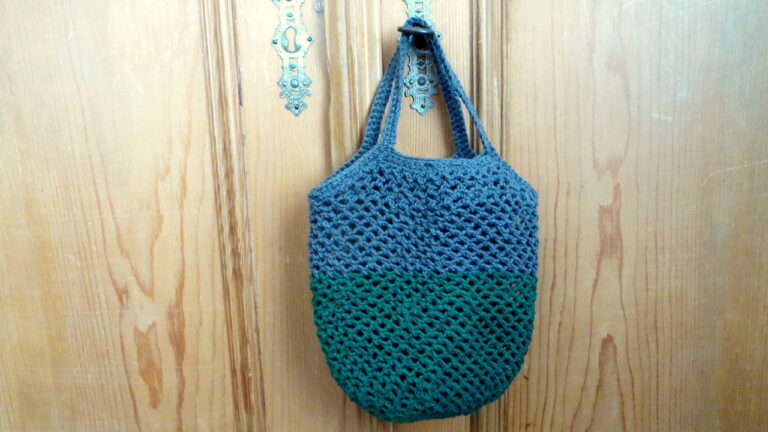Kann Jeder Häkeln
Imagine a world where anyone can crochet, regardless of their skill level. Well, in the enchanting world of “Kann Jeder Häkeln,” that dream becomes a reality. This unique platform is designed to empower beginners and experienced crocheters alike, providing a wide range of resources, patterns, and tutorials to help you master the art of crochet. From charming amigurumi creations to cozy blankets and stylish accessories, “Kann Jeder Häkeln” is your ultimate guide to unlocking your creative potential and immersing yourself in the joy of crochet. Get ready to embark on a crochet journey like no other, where endless possibilities and stunning creations await you.
The Art of Crocheting
Welcome to the wonderful world of crocheting! In this comprehensive guide, we will explore everything you need to know about this beautiful craft. From the basics to advanced techniques, we will cover it all. So grab your yarn and hook, and let’s dive into the art of crocheting!
What is Crocheting?
Crocheting is a versatile craft that involves creating fabric using a hook and yarn or thread. Similar to knitting, crocheting allows you to create a wide variety of items, from clothing and accessories to home decor and toys. However, unlike knitting, crocheting uses loops and stitches to create intricate patterns and designs. Whether you’re a beginner or an experienced crafter, crocheting offers endless possibilities for creativity and self-expression.
History of Crocheting
The origins of crocheting can be traced back centuries ago. The exact beginnings of this craft are somewhat unclear, but it is believed to have originated in the Middle East. Crocheting gained popularity in Europe during the 19th century and quickly spread throughout the world. Over time, different cultures developed their own unique crochet techniques and styles, resulting in a diverse range of patterns and traditions. Today, crocheting continues to evolve, combining traditional techniques with modern trends.
Tools and Materials for Crocheting
Before you begin your crocheting journey, it’s essential to gather the necessary tools and materials. The primary tool you’ll need is a crochet hook, which comes in various sizes and materials. Hooks are typically made from metal, plastic, or wood, each offering its own advantages. Additionally, you’ll need yarn or thread in your desired colors and weights. Yarn comes in a wide array of fibers, such as cotton, acrylic, and wool, and each type has its unique characteristics. Other useful tools include stitch markers, scissors, and a tapestry needle for weaving in ends.
Getting Started with Crocheting
Now that you have your tools and materials ready, let’s dive into getting started with crocheting. Even if you’ve never picked up a crochet hook before, don’t worry! Learning the basics is easier than you might think and will set the foundation for your crocheting journey.
Learning the Basics
The first stitch you’ll learn in crochet is the chain stitch. This simple yet essential stitch forms the foundation of most crochet projects. Once you’ve mastered the chain stitch, you can move on to learning other basic stitches like single crochet, double crochet, half double crochet, and treble crochet. These stitches allow you to create different textures and patterns in your work. With practice, your tension and stitch consistency will improve, resulting in beautiful, even stitches.
Understanding Crochet Patterns
As you progress in your crocheting skills, you’ll encounter crochet patterns. These patterns serve as guides, detailing the specific stitches and techniques required to create a particular project. It’s crucial to understand how to read crochet patterns, as they often include abbreviations and symbols. Familiarize yourself with commonly used stitches and their abbreviations to decipher patterns with ease. Remember, practice makes perfect, so don’t be afraid to start with simple patterns and gradually tackle more complex projects.
Choosing the Right Yarn and Hook Size
The choice of yarn and hook size is crucial in crocheting. Different projects require different yarn weights and hook sizes to achieve the desired outcome. Yarn weight categories range from super fine to super bulky, each yielding a different fabric texture. When selecting yarn, consider the project’s purpose and the stitch definition you desire. Similarly, hook sizes are measured in millimeters and should be matched to the recommended range of the yarn label. Experiment with different yarns and hooks to find your preferred combination.

This image is property of www.smarticular.net.
Common Crocheting Techniques
Now that you’re familiar with the basics, let’s explore some common crocheting techniques. These techniques will expand your repertoire of stitches and enable you to create more intricate designs.
Chain Stitch
The chain stitch, also known as the foundation chain, is the starting point for most crochet projects. It forms a row of interconnected loops, providing a base for subsequent stitches. Practice creating even and consistent chain stitches before moving on to more advanced techniques.
Single Crochet
The single crochet stitch is one of the most commonly used stitches in crocheting. It produces a dense and sturdy fabric, making it ideal for various projects such as scarves, blankets, and amigurumi toys. Mastering the single crochet stitch will bolster your confidence and open up a world of possibilities.
Double Crochet
The double crochet stitch is taller than the single crochet, creating a looser and more open fabric. This stitch is perfect for creating lacy designs and is commonly used in garments, shawls, and afghans. Once you’ve grasped the double crochet stitch, you can incorporate it into your projects to add dimension and texture.
Half Double Crochet
The half double crochet stitch falls between the single crochet and double crochet in terms of height. It combines the density of the single crochet with the openness of the double crochet, making it a versatile stitch. This stitch is great for creating hats, scarves, and baby blankets.
Treble Crochet
The treble crochet stitch is the tallest basic crochet stitch. It produces a loose and airy fabric, perfect for lightweight garments, shawls, and lacy designs. Although slightly more challenging than the previous stitches, mastering the treble crochet will enable you to create beautiful and intricate patterns.
Creating Different Crochet Projects
With the knowledge of various crochet techniques, you’re ready to embark on creating a wide range of projects. From scarves and hats to blankets and toys, let’s explore the endless possibilities.
Making Scarves and Shawls
Scarves and shawls are popular crochet projects, suitable for beginners and experienced crafters alike. Using simple stitches and various yarn weights, you can create stunning accessories to complement any outfit. Experiment with different stitch patterns, color combinations, and yarn textures to personalize your creations.
Crafting Hats and Beanies
Crocheted hats and beanies are not only practical but also fun to make. You can customize them to fit any head size and experiment with different stitches and brim styles. Whether you prefer a slouchy beanie, a cozy winter hat, or a sun hat for the summer, crocheting hats allows you to express your style and keep your loved ones warm.
Designing Blankets and Afghans
Blankets and afghans are perfect for showcasing your crochet skills and creating cherished heirlooms. Whether you opt for a classic granny square blanket or a modern geometric design, the possibilities are endless. Choose soft and snuggly yarns to create cozy blankets that provide comfort and warmth for years to come.
Producing Amigurumi Toys
Amigurumi, the Japanese craft of crocheting small stuffed toys, has gained immense popularity in recent years. These adorable creatures are crocheted in the round using basic stitches and are perfect for both children and adults. Let your imagination run wild as you create cute animals, fantasy creatures, and beloved characters.

This image is property of www.smarticular.net.
Troubleshooting and Common Mistakes
While crocheting is a delightful hobby, it’s not uncommon to encounter challenges along the way. Let’s explore some common troubleshooting and how to fix common mistakes.
Fixing Loose Stitches
If your stitches are too loose, resulting in a gappy or uneven fabric, there are a few techniques you can try. First, adjust your tension by consciously pulling the yarn tighter after each stitch. Alternatively, you can switch to a smaller hook size to create tighter stitches. Practice and experimentation will help you find the right balance for achieving consistent tension.
Correcting Tension Issues
Tension plays a vital role in crocheting, as it determines the size and appearance of your stitches. If you’re struggling with maintaining consistent tension, try using a yarn guide or wrapping the yarn around your fingers to create more control. Relax your grip on the yarn and hook, allowing the yarn to glide smoothly through your fingers. With practice, your tension will become more even, resulting in beautifully crafted projects.
Understanding Gauge
Gauge refers to the number of stitches and rows per inch in a crocheted swatch. It is crucial to match the gauge mentioned in a pattern to ensure the correct sizing of your project. Use the recommended hook size and yarn weight, and create a swatch to compare your stitch count with the pattern’s gauge. If your stitch count varies from the pattern, you may need to adjust your hook size or your tension to achieve the desired gauge.
Fixing Crochet Mistakes
Mistakes happen, even to experienced crocheters. Whether it’s a missed stitch, a misplaced decrease, or an uneven row, knowing how to fix crochet mistakes is essential. The simplest way to undo stitches is to carefully unravel the yarn, stitch by stitch, until you reach the error. Once the mistake is corrected, re-crochet the unraveled stitches. Crochet stitch markers can also be helpful in marking your progress and identifying mistakes before they become more challenging to fix.
Advanced Crocheting Techniques
Once you’ve mastered the basics, it’s time to challenge yourself with more advanced crocheting techniques. These techniques will push your skills further and allow you to create intricate and stunning projects.
Crochet Cables
Cables are a popular knitting technique that can also be achieved through crochet. By crossing stitches over one another, you can create the illusion of interwoven cables. Crocheted cables are commonly used in garments, hats, and even blankets, adding a touch of elegance and texture to your creations.
Lace Crocheting
Lace crochet is a delicate technique that involves creating intricate patterns and designs with open spaces. From delicate doilies to airy shawls, lace crochet adds a touch of elegance to any project. By combining various stitches and creating chain spaces, you can achieve impressive lace-like motifs.
Tunisian Crochet
Tunisian crochet, also known as Afghan crochet, combines crochet and knitting techniques to create a unique textured fabric. Using a long hook, you work your stitches in rows, as in knitting, while keeping all the stitches on the hook, as in crochet. This technique is perfect for creating thick and cozy blankets, scarves, and even garments.
Intarsia Crochet
Intarsia crochet is a technique that allows you to create intricate patterns and designs using different colors of yarn. By working the different color sections separately, you can create detailed pictures, letters, or geometric shapes in your projects. Intarsia crochet is particularly popular for creating blankets, wall hangings, and pillow covers.
Crocheting in the Round
Crocheting in the round is a technique used to create circular or tubular projects, such as hats, beanies, and amigurumi toys. Instead of working in rows, you continuously crochet in a spiral, moving from one round to the next. This technique is versatile and opens up a world of possibilities for creating three-dimensional and seamless projects.

This image is property of www.smarticular.net.
Crochet Tips and Tricks
As you delve deeper into your crocheting journey, it’s helpful to keep in mind some tips and tricks that will enhance your crafting experience.
Maintaining Proper Posture
Crocheting for extended periods can put strain on your neck, back, and wrists. To prevent discomfort and potential injuries, maintain good posture while crocheting. Sit in a comfortable chair with proper back support, keep your feet flat on the ground, and position your work at a height that allows your wrists to remain straight. Take breaks and stretch your hands and fingers regularly to prevent stiffness.
Avoiding Hand Fatigue
Crocheting involves repetitive hand and finger movements, which can lead to hand fatigue. To alleviate strain, take breaks and stretch your hands and fingers periodically. If you’re experiencing discomfort, consider using ergonomic crochet hooks that offer a more comfortable grip. Additionally, you can try varying your crochet projects to incorporate a mix of stitches and techniques, giving different muscle groups a rest.
Blocking and Washing Crochet Items
Blocking is a technique used to shape and size crochet items accurately. It involves wetting or steaming your finished project and then allowing it to dry in the desired shape. Blocking enhances stitch definition, evens out tensions, and gives your project a polished finish. Additionally, it’s essential to know how to care for your crochet items. Depending on the fibers used, some projects may be machine washable, while others require gentle hand washing. Always follow the care instructions for each specific yarn.
Working with Variegated Yarn
Variegated yarn, with its multiple colors and color changes, can add uniqueness and depth to your crochet projects. However, it can also be challenging to showcase the stitch textures with busy yarn patterns. To make the stitches stand out, consider using simpler stitch patterns or opt for solid color accents. Alternatively, choose a variegated yarn with longer color repeats to allow the stitches to shine.
Exploring Crochet Communities and Resources
Crocheting is not just a solitary hobby; it’s an opportunity to connect with fellow crafters and learn from each other. Here are some resources that can help you expand your knowledge and connect with the crochet community.
Online Crochet Forums and Groups
The internet is a treasure trove of crochet resources, including forums and online communities where you can ask questions, share your creations, and seek inspiration. Platforms like Ravelry, Crochetville, and social media groups offer a supportive and welcoming environment for crocheters of all skill levels.
Popular Crochet Blogs and Websites
Numerous crochet blogs and websites provide tutorials, free patterns, and inspiration-rich content. These resources cover a wide range of topics, from beginner-friendly projects to advanced techniques. Explore blogs like “Moogly,” “All About Ami,” and websites like “Crochet Spot” and “The Crochet Crowd” to enhance your crochet skills and stay up to date with the latest trends.
Attending Crochet Workshops and Classes
Local yarn stores, community centers, and crafting retreats often offer crochet workshops and classes. These in-person learning opportunities allow you to connect with experienced instructors, develop new skills, and meet fellow enthusiasts. Plus, participating in workshops can be an excellent way to learn new techniques and gain inspiration from others.

This image is property of www.smarticular.net.
Revitalizing Old Crochet Techniques
As the craft of crocheting evolves, it’s essential to celebrate and preserve traditional techniques that have stood the test of time. Let’s explore some old crochet techniques that are worth rediscovering.
Irish Crochet
Irish crochet is a delicate lace-making technique that originated in Ireland in the 19th century. It involves creating three-dimensional motifs using a combination of crochet stitches and fine threads. Irish crochet is known for its intricate floral designs and is often used to create stunning garments, accessories, and home decor.
Broomstick Lace Crochet
Broomstick lace crochet, also known as peacock eye stitch, is a technique that produces a unique, lacy fabric. By using a large knitting needle or dowel, you create loops that are then worked together into stitches. Broomstick lace adds a touch of elegance to scarves, shawls, and even home decor items.
Hairpin Lace Crochet
Hairpin lace crochet, commonly used in the Victorian era, involves creating a fabric strip using a hairpin lace loom or fork. The strip is then joined together using crochet stitches, resulting in intricate and delicate designs. Hairpin lace can be used to create beautiful scarves, wraps, and even table runners.
Filet Crochet
Filet crochet is a technique used to create open and lace-like designs by using a combination of double crochet and chain stitches. The patterns are formed by working solid double crochet stitches and open mesh spaces, resulting in detailed images and geometric patterns. Filet crochet is commonly used in creating doilies, curtains, and decorative wall hangings.
Crocheting for Charity
Crocheting not only brings joy and fulfillment to the crafter but can also make a positive impact in the lives of others. Here are some ways you can use your crochet skills for charitable purposes.
Donating Crocheted Items
Consider donating your crocheted items to shelters, hospitals, or organizations that support those in need. Items like hats, scarves, blankets, and baby items can bring comfort and warmth to individuals facing challenging circumstances. Check with local charities to find out their specific needs and guidelines for accepting donations.
Joining Charity Crochet Projects
Many charitable organizations organize crochet projects to support various causes. Joining these projects allows you to contribute your skills and time to making a difference. Whether it’s creating blankets for premature babies or knitting hats for cancer patients, these initiatives provide a meaningful way to give back.
Creating Warmth for the Needy
Crocheting warm items like blankets, hats, and scarves can help provide comfort to homeless individuals during cold winter months. Consider partnering with local shelters or outreach programs to distribute these items directly to those in need. Your crocheted creations can bring warmth and hope to those facing difficult circumstances.
Helping Children in Need
Crocheted toys and accessories can bring joy and comfort to children in need. Consider creating stuffed animals, dolls, or hats for children in hospitals, orphanages, or foster care. These handmade gifts can make a significant impact in the lives of children facing adversity, offering them a tangible reminder that they are cared for.
In conclusion, crocheting is a versatile and captivating craft that offers endless possibilities. Whether you’re a beginner or an experienced crafter, there’s always something new to learn and create. By mastering the basics, exploring different techniques, and connecting with the crochet community, you can continue to grow and find inspiration on your crocheting journey. So pick up your hook, find your favorite yarn, and let your creativity soar in the art of crocheting. Happy stitching!

This image is property of ais-akamai.rtl.de.

